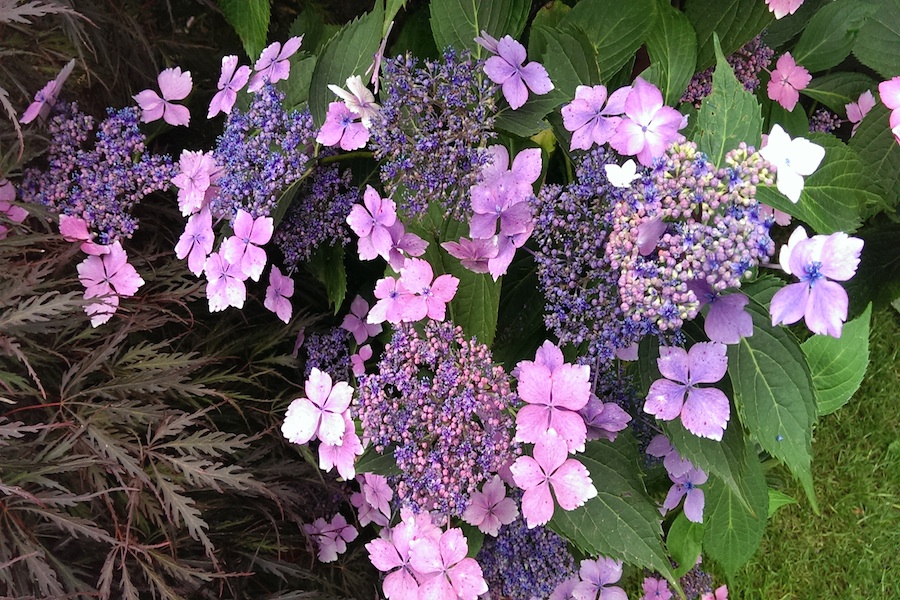Peter’s Gardening tips for August
Gardening weather roller-coaster continues…
After the heat, drought in the south, now it’s feeling like autumn with torrential rain, gales and debris. Nature knew this change was coming – a Small Tortoiseshell butterfly came into my son’s bedroom and has gone to sleep in a corner of the attic bedroom! A lot of House Martin’s and Swallows also flew south towards Africa. The weather is on the mend soon, but the days are getting shorter. Hey Ho … you can’t change the circle of life. The ground will be softer for planting plants, bulbs, grass and wildflower seeds.
Autumn is nature’s time for planting…
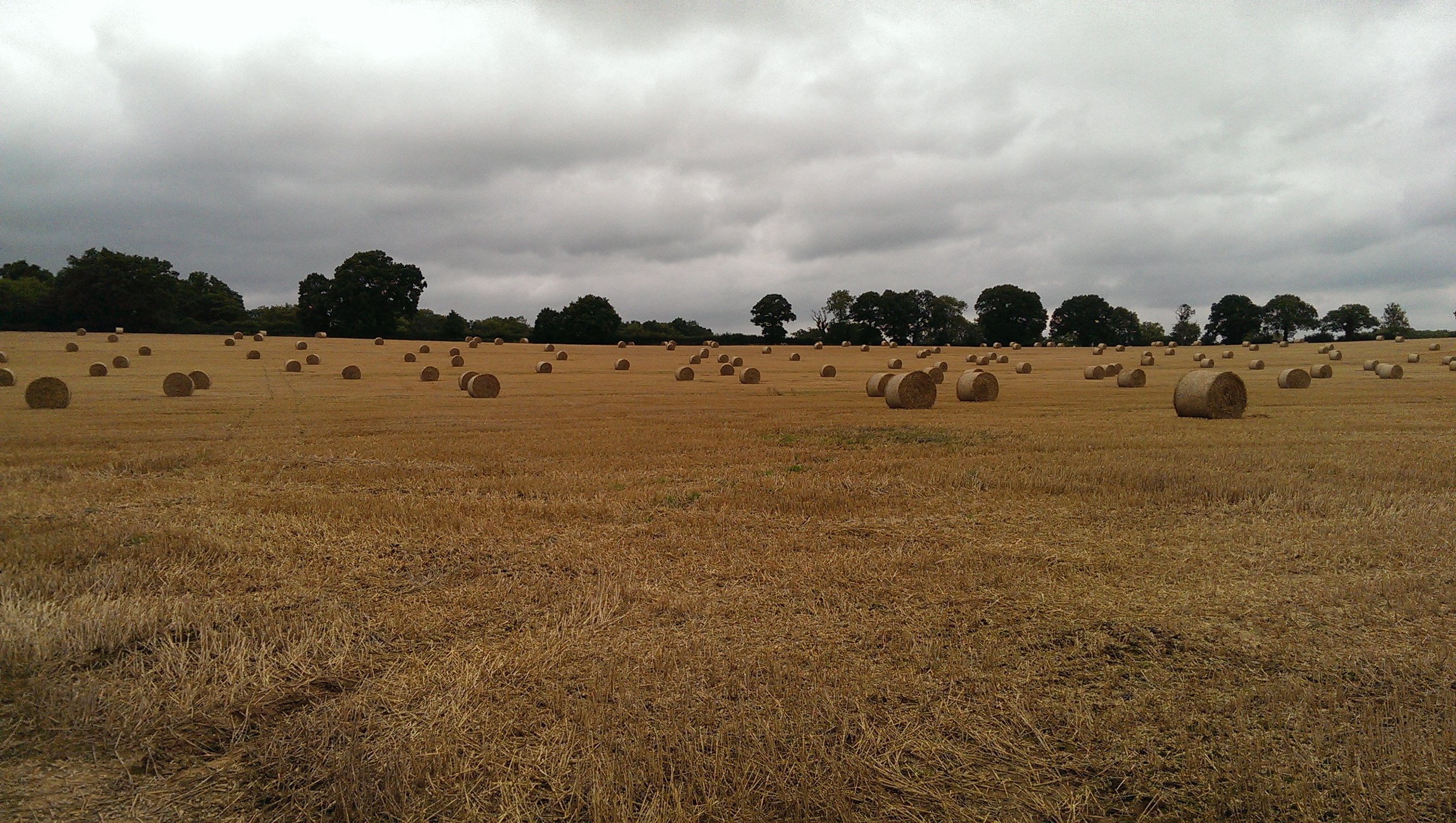
A moody sky with round bales of straw
Holiday time for a lot of us. We’ve just got back from Devon with the family, beach, barbecues, National Trust houses and gardens, walking, birdwatching, rock pools, cream teas, ice creams, ball games, adventures and exploration, Yealmpton Show, sand, shells, sea, sunshine, just wonderful to have a change of scene and recharge the batteries.
Back to the plants!!!
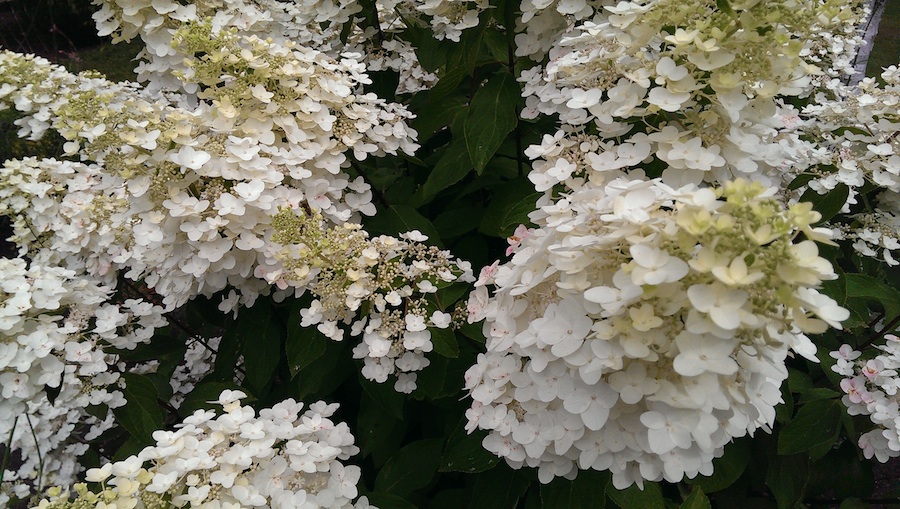
Hydrangea
Hydrangeas which were so out of fashion are back in vogue, the range of colours, sizes, shapes are absolutely fabulous. To suit any soil, grow in pots/containers, NOT eaten by rabbits or deer! Few pests apart from greenfly in early Spring and vine weevil when grown in pots, otherwise trouble free. With ‘hydra’ in the name they do like moisture. There are around 75 species of hydrangea with over 600 varieties or cultivars bred from these. The mop head or lace cap varieties (Hydrangea macrophylla) can change colour depending on the ph – acidity or alkalinity of the soil with the iron or aluminium content in the soil. So in general alkaline soils will have pink to white, acid soils more of the blue and purples.
Other plants looking fantastic at this time of year are
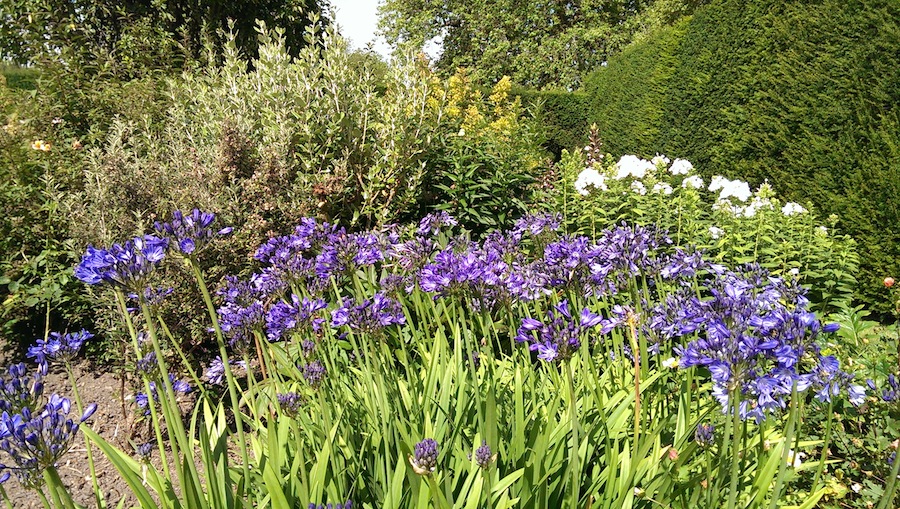
Agapanthus with white Phlox
Roses, Agapanthus, Buddleia, Penstemons, Phlox, Fuchsias, Erygiums – Sea Holly, Hebes, Lilies, Lavender, Catmint, Day Lilies…. Many attract bees, butterflies, hoverflies, moths and other insects
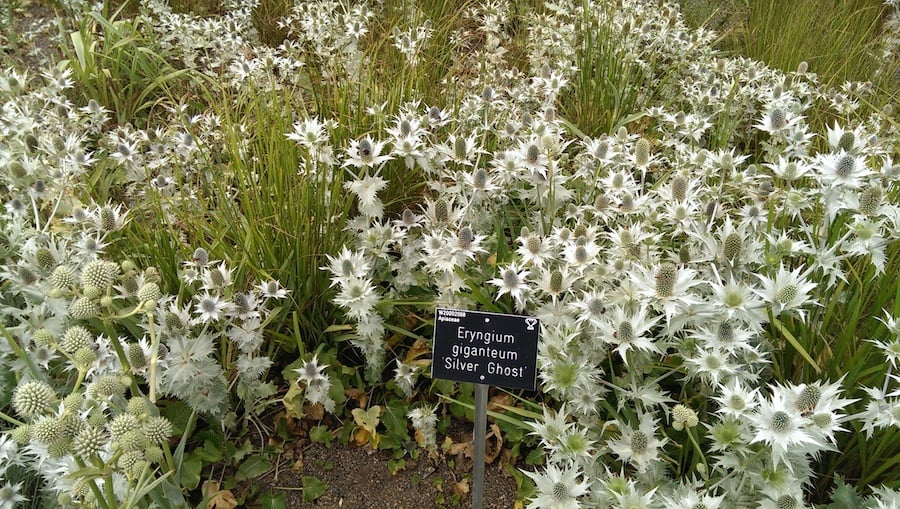
Eryngium Silver Ghost at Wisley, covered with bees.
This is the month to enjoy the great outdoors, chill out, relax, gather ideas from other gardens, socialise more, dine alfresco, recharge the batteries and go somewhere for a walk. Whilst in Devon we went to Dartmoor, took a picnic and parked up, went for a walk and sat down to lunch, whilst sat there I asked the children what they could hear, and their response was simply ‘nothing’, apart from some birds. It was truly magical, no planes, cars, lorries, trains, music, machinery etc. We forget how much noise there is around us. Listening to swallows, house martins, swifts, buzzards, stonechat and wheatear and the occasional sheep was really something special!! Soon many birds will migrate South – Bon Voyage.
Jobs to do:-
Pick flowers from the garden and bring some indoors.
Spring bulbs arrive in the garden centres, Autumn flowering bulbs like Colchcium (Autumn Crocus), Crocus sativa (Saffron Crocus, Lilies, Nerines, Crocus, Winter Aconite, Narcissus), plan where you want some Spring colour.
Think of a sunny area where you can allow the grass to grow long and plant with spring bulbs and wildflowers for this autumn. Long grass looks fabulous, is amazing for encouraging wildlife, butterflies and moths – many breed in long grass. Frogs, toads, newts love it especially the young ones they can hide and feed on creepy crawlies. Voles in long grass are food for kestrels and owls. In essence long grass, wildflowers, Spring and Summer flowering bulbs and annuals will give you immense pleasure encourage wildlife, biodiversity, helping restore one of the most important ecosystems declining in Britain.
Vegetables:-
Onions, shallots and garlic can be harvested if the foliage falls over and start to die off. Lift to dry off somewhere warm and sunny – greenhouse floor on tarmac or gravel but don’t allow to get wet. Dry off thoroughly until foliage is crispy dry them hang up in bunches in the shed or garage, cool and dry to store.
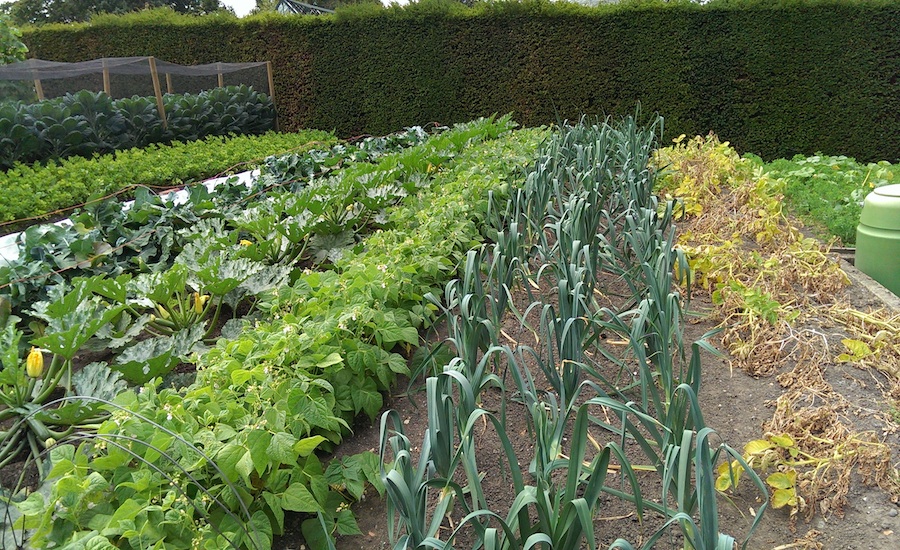
Veg at Wisley, Courgette, French beans, Leeks and Potatoes ready for digging up.
Potatoes:-
Lift when you have flowers or they have flowered. Any signs of die back from disease must be removed, cutting the foliage (Haulms) to the ground. The potatoes can stay in the ground until required or dug up, dried and bagged in paper sacks. Discard any green potatoes. As with all storing of fruit and veg only store perfect specimens – damaged, split or diseased will cross infect healthy ones. Try to check your stores regularly.
Salad crops:-
Continue to sow lettuce, parsley, spinach, dill, coriander, basil, mustards, chicory and mizuma. Some of these can be brought in on a bright windowsill, greenhouse or conservatory for supplies during the autumn/winter.
Courgettes, keep cutting and feeding any of the squashes. Raise larger fruit off the ground like pumpkins and squashes to stop rotting – a tile works well placed underneath the fruit.
Cut back strawberries if they have finished fruiting, if you don’t want the runners, remove straw and weeds.
Raspberries – summer fruiting cut down fruited canes, mulch and feed.
Wisteria:-
Pruning- time to attack the wisteria. Cut back long tendrils to 3-4 leaves, resulting in short spurs. These will turn into flower buds for next year!
Prune Pyracantha to expose the berries – leave a bit of this year’s growth for flower next Spring. (Others shrubs include any Summer flowering ones- Philadelphus, Deutzia)….
Roses:-
Climbing Roses and ramblers. Cut back old flowered stems – even really old long ones. Keep all the new stems especially the ones coming from near ground level. Tie these into the support. These are next years flowering stems! Bush roses continue to dead head unless you want the rose hips. Feed and mulch for flowers this autumn.
Cuttings:-
Perfect month for taking Lavender and Rosemary cuttings. Snip off non-flowering shoots 10-15cms long. Strip off lower leaves and cut with a sharp knife just below a leaf joint. Fill a pot with gritty compost. Dip the cuttings into Hormone Rooting powder and push the cuttings in around the edge of the pot. Water and place in a shaded area. You will be able to pot them on this autumn and plant out next spring. Other plants for the same treatment are Geraniums (Pelargoniums), Fuchsias, Salvias and many more.
A bit of time spent dead-heading every day or so keeps the garden smart, encourages more flowers. Picking Sweet peas, climbing or runner beans, dahlia flowers, courgettes will also keep up a constant supply. Water and feed in dry/windy weather.
Hedges:-
Time to give these a haircut, just check for nesting birds beforehand. Sharpen blades, grease and oil before use, nothing worse than using dirty or blunt tools!!
Weeds:-
With the recent rains, germination of weeds will be incredible, so with drier weather forecast get the hoe out, or weed killer. Pull up any large weeds before they flower and set seed!
Loads of Ragwort this year-Yellow flowers and Poisonous to livestock. Please pull it up as the seeds are like fluffy cotton wool and blow around in the wind. Wear gloves or gauntlets to pull it up, burn or dispose of.
For the Diary – RHS Garden Wisley Flower Show 8th – 13th September, sixty specialist nurseries and the National Dahlia Society Annual show is 8th – 11th September.
Also, the Glasshouse will be holding a Floristry competition run by Surrey NAFAS open from 9-6pm tues – sat, 9-5pm sun.
PLEASE FEEL FREE TO LEAVE ANY GARDENERS QUESTIONS UNDERNEATH THIS FEATURE AND I WILL DO MY BEST TO ANSWER YOU PERSONALLY … ALSO IF YOU WOULD LIKE A GARDENING TOPIC COVERED JUST LET ME KNOW
Happy Gardening, enjoy the harvest, grab the hazel nuts before the squirrels!
Regards Peter Mills
Latest posts by Peter Mills (see all)
- Peter’s Gardening tips for November - October 29, 2024
- Peter’s Gardening tips for October - October 1, 2024
- Peter’s Gardening Tips for September 2024 - August 29, 2024
- Peter’s Gardening Tips for August - August 1, 2024
- Peter’s Gardening Tips for July - July 1, 2024








